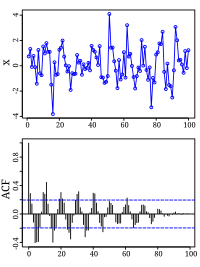
Photo from wikipedia
We demonstrate that x-ray fluorescence emission, which cannot maintain a stationary interference pattern, can be used to obtain images of structures by recording photon-photon correlations in the manner of the… Click to show full abstract
We demonstrate that x-ray fluorescence emission, which cannot maintain a stationary interference pattern, can be used to obtain images of structures by recording photon-photon correlations in the manner of the stellar intensity interferometry of Hanbury Brown and Twiss. This is achieved utilizing femtosecond-duration pulses of a hard x-ray free-electron laser to generate the emission in exposures comparable to the coherence time of the fluorescence. Iterative phasing of the photon correlation map generated a model-free real-space image of the structure of the emitters. Since fluorescence can dominate coherent scattering, this may enable imaging uncrystallised macromolecules.
Journal Title: Physical review letters
Year Published: 2023
Link to full text (if available)
Share on Social Media: Sign Up to like & get
recommendations!